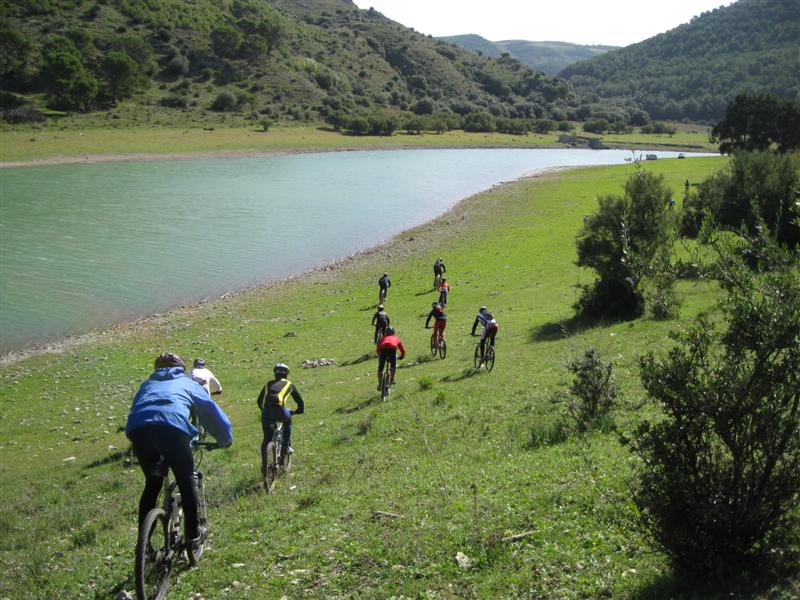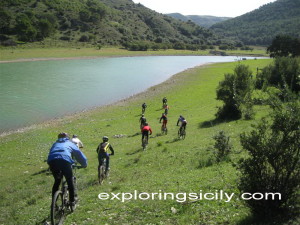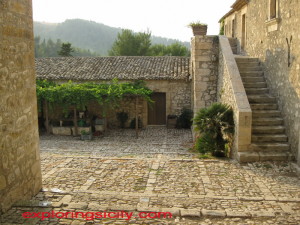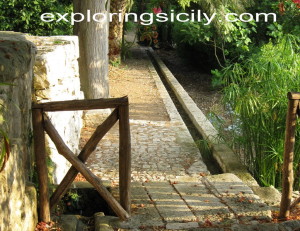Uscendo dal centro abitato di Vittoria e dirigendosi verso S. Croce Camerina, si incontra, sui terreni di rocce biancastre e tenere (Trubi), una vegetazione particolare costituita essenzialmente da un sottobosco di Rosmarino, Timo e Lentisco che accompagna un bosco di pini particolari, dal portamento contorto e sofferente: “I Pini d’Aleppo” (Pinus halepensis). Lungo la Valle del Fiume Ippari, in particolare nelle zone più impervie, questa specie non è rara è costituisce una pineta per la quale gli studiosi hanno ipotizzato un’origine autoctona e naturale.
Il Pino d’Aleppo, allo stato spontaneo, è oramai scomparso dal resto della Sicilia, solo in quest’area localizzata lungo la Valle dell’Ippari, vegeta con un rigoglìo, un disordine ed un corteggio di specie minori che ha permesso di ipotizzare che essa rappresenti un lembo relitto dell’originaria foresta che ricopriva in passato il territorio. Il Pino d’Aleppo è una delle specie di pino litoraneo che è possibile rinvenire nelle pinete delle terre circummediterranee. E’ un albero elegante e dal portamento estroso più variamente e riccamente ramificato degli altri pini litoranei (Pino Domestico, Pino da Pinoli, etc.). Il sottobosco delle pinete a Pino d’Aleppo è rappresentato da una ricca macchia con elementi termofili, fra cui sovente si trova l’Oleastro ed il Carrubo (Ceratonia siliqua) e le altre specie caratteristiche del più caldo climax mediterraneo: l’Oleon-Ceratonion. Lungo la vallata del fiume Ippari oltre al Pino d’Aleppo è possibile trovare rari, maestosi e secolari esemplari di Lentisco (Pistacia lentiscus), di Ilatro sottile (Phillyrea angustifolia), di Alaterno (Rhamnus alaternus).
La fauna che è possibile rinvenire all’interno della Riserva del “Pino d’Aleppo” è varia e composita. Numerosi sono i rappresentanti sia tra i Vertebrati, che tra gli Invertebrati. Tra i Vertebrati sono presenti i rappresentanti dei Mammiferi, quali la Donnola (Mustela nivalis), il Riccio (Erinaceus europaeus) l’Istrice (Hystrix cristata), il Coniglio (Oryctolagus cuniculus), la Lepre (Lepus europaeus), la Volpe (Vulpes vulpes), il Topo Quercino (Eliomys quercinus), il Ratto (Rattus rattus), l’Arvicola (Arvicola terrestris ), il Toporagno (Sorex araneus), varie specie di Pipistrello, Gatti e Cani inselvatichiti. La classe degli Uccelli è degnamente rappresentata in quest’area da specie tipiche della pineta, quali: la Ghiandaia (Garrulus glandarius), il Cardellino (Carduelis carduelis), il Verzellino (Serinus serinus), il Merlo (Turdus merula). Nelle zone più aperte è presente l’Upupa (Upupa epops). Fra i rapaci diurni sono stati segnalati: la Poiana (Buteo buteo), il Gheppio (Falco tinnunculus), il Falco di palude (Circus aeruginosus); tra i rapaci notturni è tipico l’Allocco (Strix aluco), che si nutre di piccoli roditori, la Civetta (Athene noctua), il Barbagianni (Tyto alba), l’Assiolo (Otus scops). Sebbene le paludi costiere siano state prosciugate dalle bonifiche, spesso è possibile osservare nei piccoli stagni che si formano nelle depressioni del terreno, esemplari di uccelli migratori provenienti dalla vicina Africa: il Cavaliere d’Italia (Himantopus himantopus), l’Airone cinerino (Ardea cinerea), la Garzetta (Egretta garzetta), il Germano reale (Anas platyrhynchos), la Marzaiola (Anas querquedula), la Volpoca (Tardona tardona), il Martin pescatore (Alcedo atthis), il Gruccione (Merops Apiaster). Tra i rappresentanti dei Rettili, sono stati segnalati numerosi esemplari di Ofidi, tra cui numerose specie di colubri, ad es. il Colubro leopardino (Zimemis situla). Tra i Sauri sono presenti Lucertole, Ramarri i cui maschi sono riconoscibili per la colorazione verde smeraldo del corpo e azzurro turchese della gola, Gongili, Gechi e Tartarughe. Tra gli anfibi sono presenti Raganelle, Rane verdi e Rospi. Tra i pesci, quando le acque del fiume erano sicuramente in condizioni di maggior equilibrio ecologico, erano presenti Tinche e Anguille. Alla foce del fiume per combattere la malaria, all’inizio del secolo, è stata introdotta la Gambusia affinis, un piccolo pesce che si nutre delle larve delle zanzare. I rappresentanti della fauna invertebrata sono meno appariscenti ma ciò nonostante, di notevole interesse ecologico e biogeografico. Son bene rappresentate tutte le classi di invertebrati, in particolare gli Insetti: Lepidotteri, Coleotteri, Ditteri, Ortotteri etc.
Vuoi fare questo tour? Contattaci
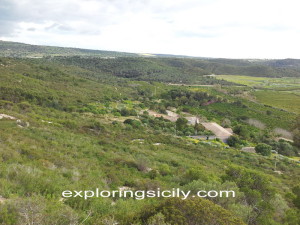

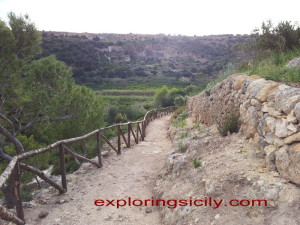
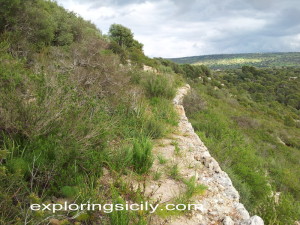
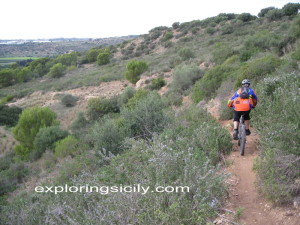

 IPPARI VALLEY AND RESERVE ALEPPO PINE
IPPARI VALLEY AND RESERVE ALEPPO PINE
Out of the Vittoria urban area and toward S. Croce Camerina, on white and tender rocky lands (Trubi), one sees peculiar vegetation. It is essentially composed of an underbrush of Rosemary, Thyme and Lentisk, which accompanies woods of specific pine trees featuring a twisted and suffering bearing: the Pino D’Aleppo (Pìnus halepensis). Along the lppari River valley. in particular in the wildest areas, this species is not rare and forms a pine grove, whose origin is said to be indigenous and natural.
The Pino D’Aleppo, in its spontaneous status, has now disappeared from the rest of Sicily, it thrives only in the lppari River area in a vigorous and unruly manner, it features an ensemble of minor species, which has lead to the belief that it represents a relict of the original forest once extending over the territory. The Pino D’Aleppo is one ofthe coastal pine tree specìes likely to be found in the pine tree groves of Mediterranean lands. lt is an elegant tree with an extravagant bearìng. It is branched in a more various and rich manner than other coastal pine trees (Domestic pine, Pine for pine nuts etc). The crown is thinner and paler, rounded on top, but at times it is divided on the branches and twisted trunks. lt lives preferably on the soils and on calcareous rocks in the hottiest and driest area of our coasts, where oak tree grows cannot develop due to climate factors. It is the most appropriate tree to fill in barren coastal areas, where even the typical mediterranean patch can barely develop. Benefiting from the pine tree shelter, the patch is able to grow in a thriving manner. A rich patch with heat·conducting elements represents the underbrush of the Pino D’Aleppo pine tree groves. Among these, one often finds the Wilde-olive and the Carob tree (Ceratonia siliqua) and the other species that are typical of the hottest Mediterranean climate: the Oleo – Ceratonion. Along the River Ippari valley, beside the Pino D’Aleppo, it is possible to find rare, massive and secular instances of Lentisk (Pistacia lentiscus), of thin “llatro” (Phyllirea angustifolia), of “Alaterno” (Rhamnus alaternus ).
The animal world found within the reservation “Pino D’Aleppo” is various and composite. There are numerous representatives among both the Vertebrates and the Invertebrates. Among the Vertebrates there are representatives of the Mammals, such as the Weasel (Mustela nivalis), the Sea Urchin (Erinaceus europaeus), the Porcupine (Hystrix cristata), the Rabbit (Oryctolagus cuniculus), the Hare (Lepus europaeus), the Fox (Vulpes vulpes), the Oak Mouse (Eliomys quercinus), the Rat (Rattus rattus), Field Mouse (Arvicola terrestris), the Spider Mouse (Sorex araneus),various species of Bats, wild cats and dogs. The class of the birds is worthily represented in this area by species typical of the pine tree coves, such as: the Jay (Garrulus glandarius), the Goldfinch (Carduelis carduelis), the Blackthroated Canary (Serinus serinus), the Blackbird (Turdus merula). In the more open areas, the Hoopoe (Upupa epops).Among the diurnal birds of prey the following have been identified: the Buzzard (Buteo buteo), the Kestrel (Falco tinnunculus), the Marsh Harrier (Circus aeruginosus); among the nocturnal birds of prey it is typical the Twany Owl (Strix aluco), which feeds on small rodents, the Little Owl (Athene noctua), the Barn Owl (Tyto alba), the White-faced Owl (Otus scops). Although the coastal swamp have been drained by the clean-up projects, it is often possible to observe the following migrating birds from Africa in the small marshes within the soil depressions: the Black-winged Stilt (Himantopus himantopus), the Heron Blue (Ardea cireneo], the Little Egret (Egretta garzetta), the Mallard (Anas platyrhynchos), the Garganey (Anas querquedula), the Shelduck (Tardona tardona), the Kingfìsher (Alcedo atthis), the Gruccione (Merops Apiaster). Among the representatives of the reptiles, numerous examples of the Ophidians, have been identified, among which numerous species of colubers, such as the Coluber leopardino (Zimemis situla). Among the Saurians, one can find Lizards, Green lizards, whose males are easily recognizable for the emerald green colored body and the turquoise throat, Gongili, Geckos and Turtles. Among the Amphibians, Tree frogs, Green Frogs and Toads are present. Among the fish, surely when the river water presented a higher ecological balance, Tenchs and Eels were present. At the beginning of the century, the Gambusia affinis was introduced in the river delta in order to fight malaria. The Gambusia was a small fish that feeds on larvae and mosquitos. All the invertebrate classes are well represented, in particular the insects: Lepidopteras, Beetles, Dipterons and Orthopterons.
Do you enjoy this tour? Contact us
